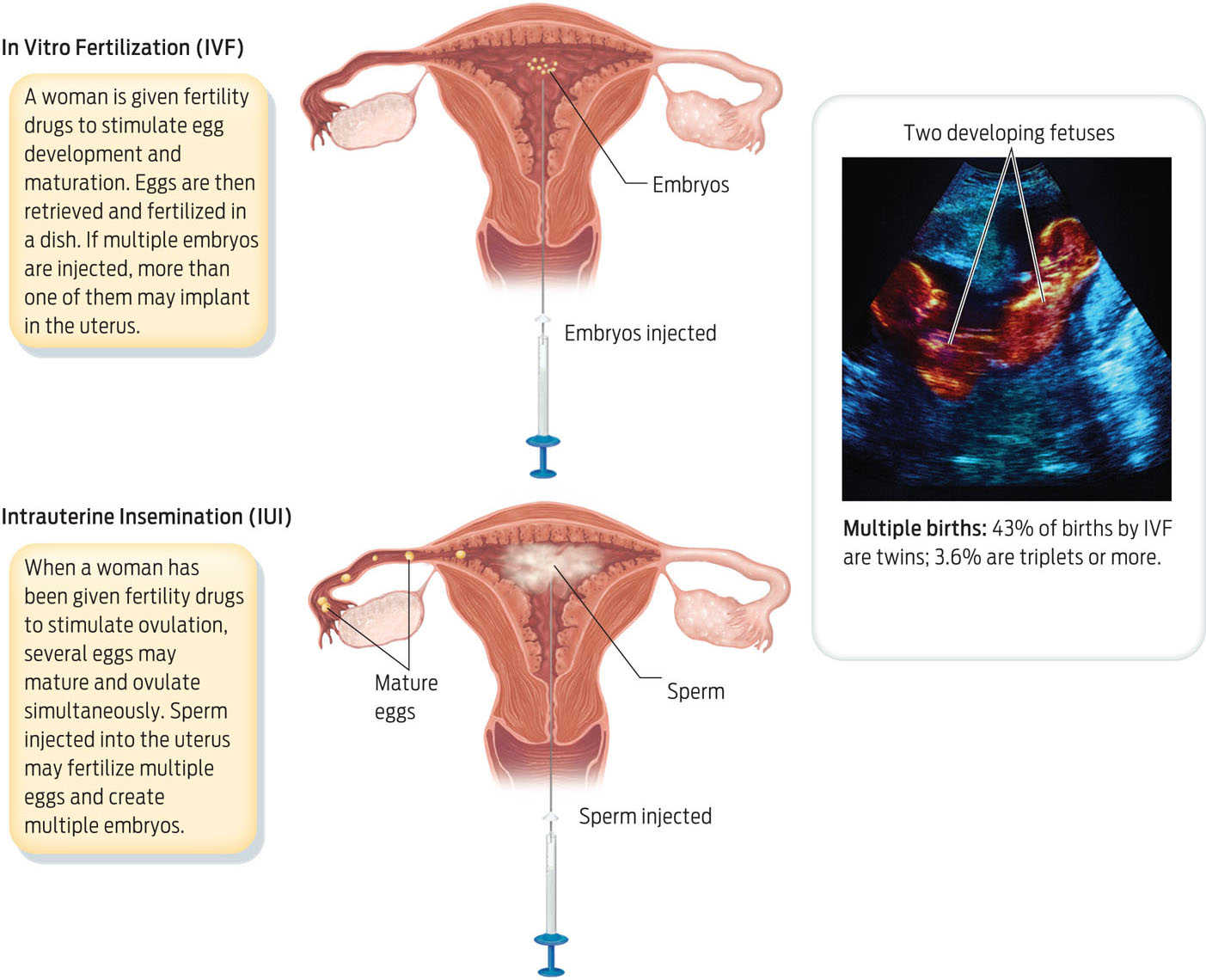THE PROBLEM OF MULTIPLES
While Suleman’s case made numerous headlines and generated a strong backlash against what many saw as the selfish and irresponsible “Octomom,” the lessons of the case extend well beyond this one woman’s unusual story. Increasingly, people with all kinds of fertility difficulties—from polycystic ovary syndrome to low sperm count to advanced maternal age—are turning to assisted reproduction for help conceiving a child. Lesbian and gay couples, too, are seeking help from fertility specialists in their quest to become parents. Multiples are often an unintended consequence of the technologies used.
INTRAUTERINE INSEMINATION (IUI) A form of assisted reproduction in which sperm are injected directly into a woman’s uterus.
Assisted reproduction takes a number of forms. Besides IVF, another popular method is intrauterine insemination (IUI), in which sperm are injected directly into the uterus. This approach, also known as artificial insemination, is used most often when infertility can be traced to low sperm count, or to sperm that are “slow swimmers.” It is also commonly used when a woman is trying to conceive with donor sperm or if the cause of infertility cannot be determined. Ultrasound technology is often used to monitor ovulation, so the insemination can be performed when chances are highest that one or more eggs have been released into the oviduct.
Commonly, both IVF and IUI start with a course of fertility drugs in the weeks before the procedure. These are usually FSH and LH, the hormones that stimulate ovarian follicles to develop and eggs to ovulate. The treatment works well for promoting follicle development and for controlling the precise time of ovulation, but there is a catch: fertility drugs almost always cause multiple eggs in multiple follicles to develop. This effect is desirable during IVF, in which the number of eggs that are fertilized outside the body and implanted into the uterus can be controlled. But this advantage turns into a liability with intrauterine insemination. Since sperm are inserted into the uterus during insemination, it’s difficult to control the number of eggs that are fertilized. Multiple births result when more than one egg is fertilized (each by a different sperm), leading to more than one embryo implanting in the uterus and developing into a fetus.
This is what happened to Jon and Kate Gosselin, the famous couple who starred in the TLC television reality series Jon & Kate Plus 8 from 2007 to 2011. The couple first had twins and then later sextuplets, all of whom were conceived through intrauterine insemination.
The book Multiple Blessings, by the Gosselins and Beth Carson, tells the story. Kate’s first treatment consisted of “painful injections” of fertility drugs to stimulate her ovaries. She ended up having twins. A year later, Kate longed for another baby. This time, Kate saw a different specialist. Kate and her husband told their doctor that they did not want multiples but would not selectively “reduce,” or abort a fetus. She received another round of fertility drugs.
When Kate had an ultrasound examination during the treatment, the Gosselins saw three, possibly four, developing eggs. Their doctor told them that they were unlikely to end up with three or four babies, but to be sure to avoid multiples he suggested that they forgo intrauterine insemination then and try again later. They decided to go ahead with the insemination anyway. When the sonogram showed seven developing embryos (one would later disappear), Jon dropped to his knees, Kate recalled in the book (INFOGRAPHIC 30.9).
A hazard of assisted reproduction is a high probability of multiple births. Babies born as multiples are more likely to be born underweight and premature, putting them at risk for a variety of serious health conditions.
